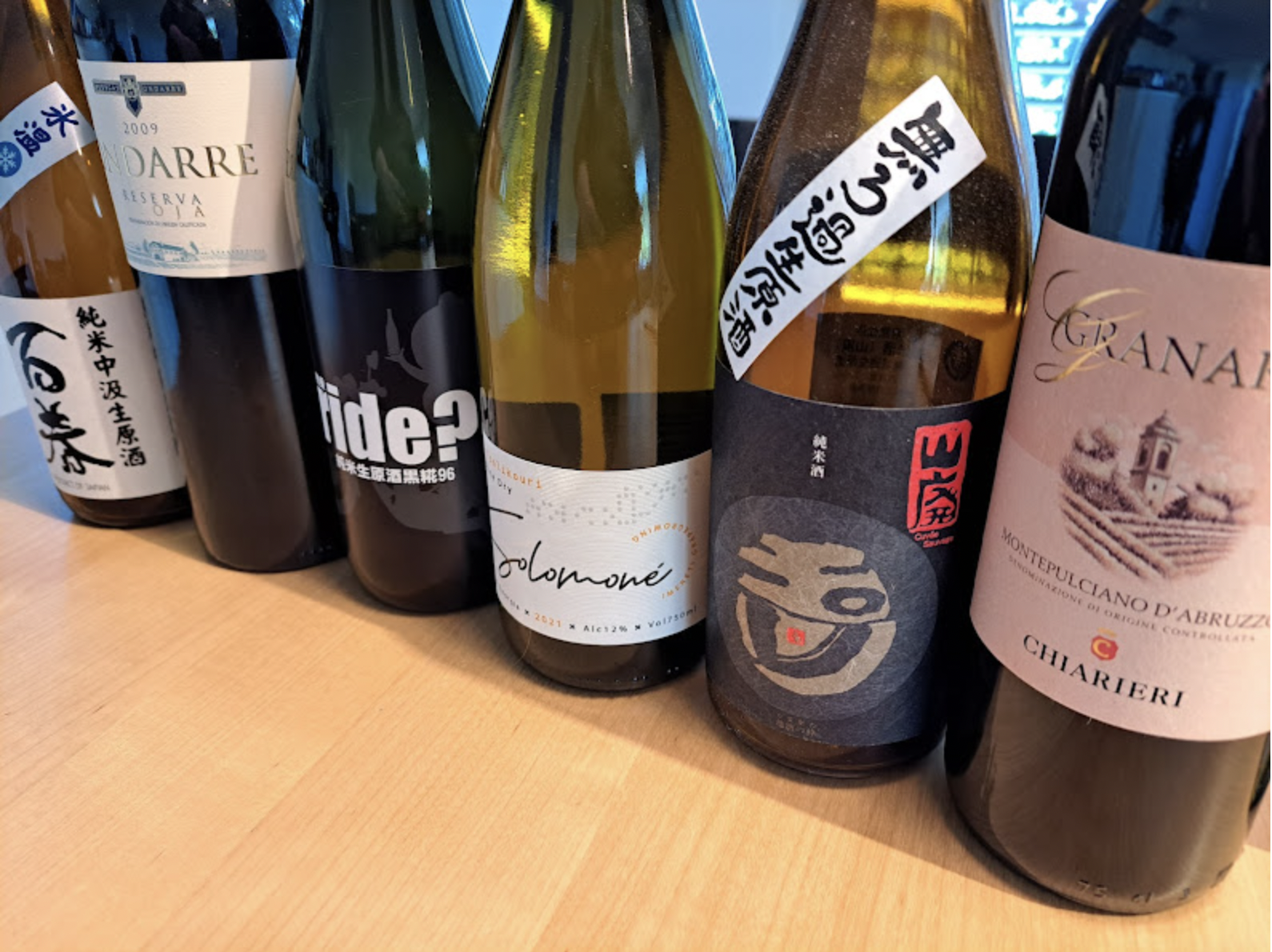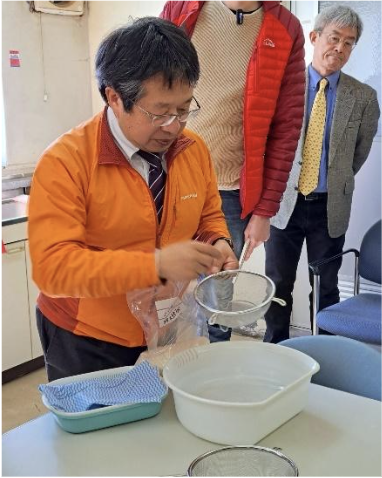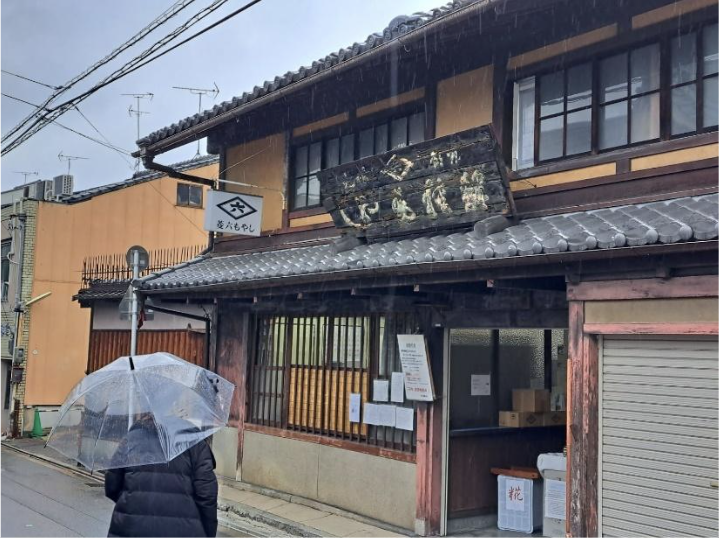Is Wine the Best Way to Promote Sake?

Exports are steadily climbing and more people are beginning to understand what it is, but sake still has a way to go before it can solidify its place alongside other popular drinks categories outside Japan. How to get it there is the million-dollar question.
One strategy the sake industry has been proactively pursuing for many years is positioning sake adjacent to wine. The respected International Wine Challenge (IWC) competition launched a Sake Division in 2007 with support from the Sake Samurai Association, and today teams of sake professionals judge alongside their wine sommelier colleagues. The Wine and Spirit Education Trust (WSET), a major professional educator for the drinks industry, launched courses for sake in 2014, and in 2021 celebrated 10,000 students studying their introductory Level 1 and advanced Level 3.
In 2022, the Japan Sake and Shochu Makers Association (JSS), which represents nearly all sake breweries (and shochu distilleries) in Japan, forged a partnership with the Association Internationale de la Sommellerie (ASI), an umbrella organization for wine sommelier associations in over 60 countries. JSS chose ASI with the goal of promoting sake alongside wine, which resulted in ASI integrating sake service into their exams and JSS hosting ASI-nominated sommeliers on occasional sake education tours throughout Japan, and so far proven to be a fruitful and beneficial partnership.
Hitoshi Utsunomiya, director of JSS, is confident that wine is a good way to promote sake. Wine and sake have many similarities, he points out: both are enjoyed with food, and skillful pairing can elevate both the food and the sake or wine. Spirits tend to live in a space before or after meals, and beer (generally) lacks the higher perceived value of wine, making them arguably less useful as an entry point.
The acidity and astringency of wine naturally complement fatty or oily dishes, but a global shift towards lighter and healthier ingredients has created an opening for sake to shine through pairings with seafood, eggs and vegetables. As demonstrated by its smooth integration into WSET courses and curriculum, sake can be more than adequately described and expressed using existing frameworks for wine. As far as Utsunomiya is concerned, leaning into wine is a logical choice for promoting sake.

(Photo © 2023 Arline Lyons)
He also acknowledges some notable differences, however. The first is umami: the savory quality that makes sake an exceptional match for many vegetables and seafood is a stranger in the world of wine. And while many good wines are appreciated for their rich and complex flavors complemented by a long finish, the experience of many exceptional sake can be quite the opposite, light with a short, clean finish meant to cleanse the palate.
The theory is that promoting sake alongside wine should be effective because people who like wine should inherently be interested in sake. The question is: Are they?
Perusing wine retailers, it often stands out that very few also go out of their way to stock sake. When they do, it’s often either the usual suspects on offer from a handful of large-scale producers, or a very specific, select offering that’s carried thanks to concentrated efforts from boutique sake importers or a handful of export-focused breweries. Even where there is sake available, it can feel like a token effort to include another product type rather than an extension of the existing product range.

Despite its ability to shine where wine occasionally struggles, it’s also still far too rare to see a dedicated place for sake in pairing menus. It remains largely stuck in Japanese or pseudo-Japanese bars and restaurants, which is disappointing, as the global permeation of its brewed brethren – beer and wine – can largely be attributed to these categories’ placement in drinking and dining establishments of just about any form of cuisine or experience you can imagine. Many Japanese restaurants run by (and resultingly, often for) Japanese have great sake lists, but that does not often carry over to larger chains or restaurants run by and for locals, where sake tends to be mass-produced and priced to be an easy add-on to a meal. And while 10,000 students in 7 years sounds like a great achievement for the WSET courses – and it is – it still pales beside the number studying wine and spirits - over 108,500 for wine and 9,000 for spirits in the 2020/2021 academic year alone.
The question then becomes: Why isn’t this strategy producing more results, despite the strong arguments for why sake could (and should) succeed when promoted alongside wine?
One reason could be that the differences between wine and sake have been underestimated. Almost every sake course will compare its basic flavor profile to that of wine and beer, pointing out that sake lacks acidity and bitterness. These are both points in its favor for pairing, but their absence can occasionally make sake feel thin and weak, perceived as lacking complexity in comparison, while its star feature, umami, is still not well understood.
And while WSET started teaching sake in 2014, their wine courses have run since 1979. Formal sake education simply hasn’t been around as long. Sake has won a place at prestigious events, but many wine specialists still haven’t put in the time to fully understand it. I was at the IWC awards dinner when an employee of a global wine company was dragged to the sake table by a friend and struck up a conversation with, “this has red, white and rosé, right?”
Even the most elegant theory can fail under real-world conditions.
Sake brewery representative and wine merchant Henry Thorogood has a cautious but still optimistic view. He sees very positive results from educational sake tours run by ASI and French sake competition Kura Master for highly trained and talented sommeliers. They are valuable allies, but even once they’ve been engaged and educated it does not mean they will automatically become a flag bearer for sake wherever they go.
Asked about inclusion on restaurant menus, Henry stresses that “sake has to solve a problem” to make it onto the list in an environment dominated by wine. Sommeliers who have met brewers and actively thought of food pairings as a part of tours and tastings understand the potential of sake in a deeper way, so are more likely to both reach for it to solve a pairing problem and make the extra effort needed to bring a sake into their bar or restaurant.

(Photo ©2023 Arline Lyons)
So, it’s not clear if a strategy of promoting sake alongside wine will deliver results easily, quickly, or at scale.
It also raises the question of whether concentrating promotional efforts on wine benefits the market for sake as a whole. A great deal of mass-produced sake, often treated as a low-risk add-on in casual restaurants, has its own route through large producers and exporters. It’s entirely possible that the current strategy of working with experienced wine sommeliers could end up acting only at the higher end of the market without a significant enough trickledown effect, leaving the large mid-tier market still unsupported.
There’s no question that the world of wine has great potential for promoting sake. There are many parallels, including similar packaging, ways of drinking, and to some extent pricing. But it’s not the only way, and the somewhat singular approach may not necessarily pay off by delivering the results the industry needs to have sake take an unwavering place alongside other drink categories at the table. For example, many overseas sake brewers have grown and flourished in the small-scale and highly experimental craft beer ecosystem, with most craft sake brewers in the US, and several in Europe, originally coming from a background brewing beer or cider. It’s entirely possible that reevaluating the importance of wine and embracing a more diverse range of strategies might be necessary to truly bring sake to the world.
References
Personal communication, Histoshi Utsunomiya, 18 July 2023
Interview, Henry Thorogood, 24 July 2023
WSET celebrates milestone ten thousand sake students https://www.wsetglobal.com/news-events/news/2021/april/21/wset-celebrates-milestone-ten-thousand-sake-students/ from WSET, 21 April 2021
Announcement of the Association de la Sommellerie Internationale (ASI) Partnership https://japansake.or.jp/sake/en/topic/news/announcement-of-association-de-la-sommellerie-internationale-asi-partnership/ from JSS, 23 May 2022
IWC https://www.sakesamurai.co.uk/iwc/ from Sake Samurai Association UK, accessed 8 August 2023
“A rice wine, which is actually closer to a strong beer — very confusing!” https://www.irishdrinkshop.com/Sake accessed 30 July 2023
Record number of students take WSET qualifications over last year https://www.wsetglobal.com/news-events/news/2021/september/21/record-number-of-students-take-wset-qualifications-over-last-year/#:~:text=The%20Wine%20%26%20Spirit%20Education%20Trust,global%20network%20of%20course%20providers. From WSET, accessed 8 August 2023